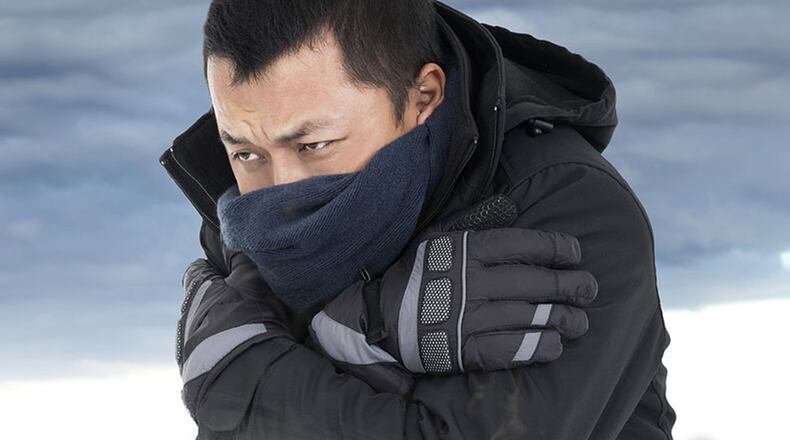Hypothermia occurs most commonly at very cold environmental temperatures but can occur even at cold temperatures (above 40℉) if a person becomes chilled from rain, sweat or submersion in cold water.
Warning signs for hypothermia in adults would include:
• shivering/exhaustion
• confusion/fumbling hands
• memory loss/slurred speech
• drowsiness.
If you notice signs of hypothermia, take the person’s temperature. If it is below 95℉, the situation is an emergency; get medical attention immediately.
To avoid hypothermia, dress warmly and stay dry during cold weather. Adults and children should wear:
• a hat, because much of your body heat can be lost from your head;
• a scarf or knit mask to cover face and mouth to protect your lungs from extreme cold;
• sleeves that are snug at the wrist;
• mittens (they are warmer than gloves);
• water-resistant coat and boots;
• several layers of loose-fitting clothing.
Wear layers of loose-fitting, lightweight, warm clothing when outside during extremely cold weather:
• Inner layer should be fabrics that will hold more body heat and don’t absorb moisture, with wool, silk or polypropylene being more efficient at holding body heat than cotton.
• Insulation layer of classic fleece, wool or goose down will help you retain heat by trapping air close to your body.
• Outer layer helps to protect you from wind, rain, snow, and preferably be water and wind resistant to reduce loss of body heat.
Civilian Health Promotion Services will be offering educational briefings on winter weather safety during December and January. For more information, visit AFMCwellness.com or contact your local CHPS team. Comprehensive information on cold weather safety can be found on the National Weather Service website, www.weather.gov.
About the Author
